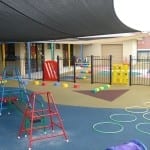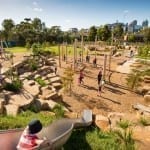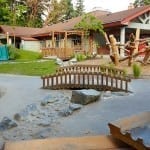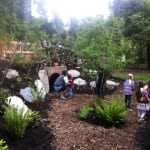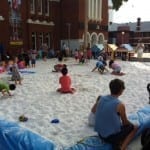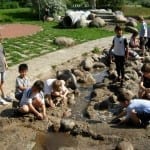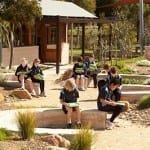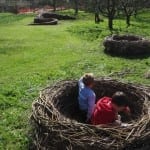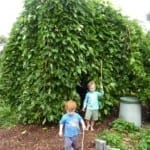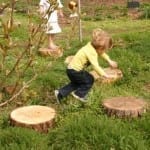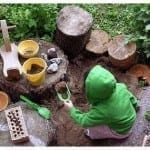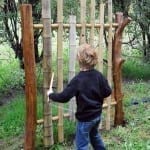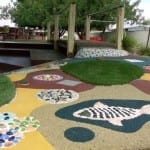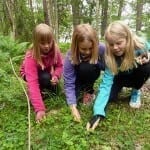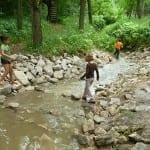On Wednesday the 24th of June the Australian Institute of Landscape Architecture (AILA) held a discussion panel on the importance of supervised early childhood play settings in a series of seminars they refer to as ‘AILA Talkfest’. Whilst some may be scratching their heads wandering what that has to do with landscape architecture, those of you that are working within a design studio would know that there has been a massive increase in both the amount of these centres and the quality of which they need to uphold. With keynote speakers Ruth Garlick (NSW Department of Education and Communities) Fiona Robbe of Architects of Arcadia and Janet Robinson, an Outdoor Teacher at Mia Mia found in the Macquarie University grounds, there was a well-rounded discussion on the importance of early childhood development, the challenges facing the designers of these spaces and the changing regulations and standards that are set by a variety of authorities including the Australian Childrens Education and care quality Authority who have established the national qualities standards (NQS) as a guide to encourage these centres to strive for the best quality environment for the children.
There are a variety of reasons that have led to the increase in these early childhood centres such as increased demand as parents work longer hours, population growth and the new regulations calling for an overhaul of existing centres to keep up with the changes (such as the increase in outdoor play space). These regulations and Australian Standard amendments (AS4685:204 part1-6 and AS4685:2014 part 11 – rope structures) are trying to change the way children react and interact with natural elements. An attempt to break away from what childhood centres have become (an outdoor area that looks similar to a prison) to what they could become.
- Before
- Before
- After
- After
- After
During the age of 0 – 2 years old a child’s brain is developing at a rate of over 250000 neurons per minute and by the time they are 2 their brain is 80% the size of an adults brain. This period is extremely important to teach children the fundamental motor skills that will assist them throughout their entire lives. During this period they enter what is called the ‘Sensorimotor Period’ (the children’s thoughts and understandings are limited to things they can directly perceive or do) followed by ‘Preoperational Thinking’ (the children learn to use symbols and representational thinking, such as language). It is important that within these two fundamental periods in a child’s life, they learn to appreciate and respect the natural world by way of playing and interacting with natural play settings. This is outlined in the NQS document, paying particular attention to Quality Area 3 (3.2.1,3.1.3, 3.2.2, 3.3.1, 3.3.2 to be precise) where they run through the benefits of outdoor play and the effects it can have on the mental health of a child later in life. A simple rule of thumb is ‘every dollar spent on a child development in these early years is $18 saved later in their life’ due to the health benefits associated with outdoor, natural play.
Fiona Robbe referred to what she calls the 10 squared rules where each area within the play space should have 10 different areas of play and within those 10 areas there should be 10 reasons to be there or 10 things to do within these areas. These 10 areas could be but are not limited to:
- A Sand pit – Away from doors and deeper than 500mm (the deeper the better)
- Water play – These are always great areas for children to work together and collaborate
- An Outdoor Learning Area – Not for the entire centre, just for those small groups who have made a significant discovery
- Cubbies – Doesn’t have to be a typical cubbie, could even be a weeping mulberry bush.
- Rate Equipment Surface – an open space to place moveable play items
- Open Space – Hopefully turf.
- Nature Zones – Small paths through garden beds where children can interact with the plant material
- Digging Patch – Mud. Kids love it! Just need to choose the right soil (loamy/ clay based soil is best – stay away from the loamy stuff)
- Music – Something to experiment with sounds. It can be as simple as a few bamboo stalks on the fence or bells hanging from a trees branch
- Animals –It has been proven that animals calm children down, so if they fit in chooks are very easy to look after the children love them. If live animals aren’t an option, try and integrate animals somewhere into the design, it might just be the friend that quiet child needs!
- Sand Pit
- Water Play
- Outdoor Learning
- Cubbies
- Cubbies
- Open Space
- Nature Zone
- Nature Zone
- Digging
- Music
- Animals
All 10 areas must link via a series of paths!
For those interested in the changes to the Australian Standards regarding play settings here is a quick recap:
Playground standards appendix 22 early childhood
Standards for Fixed equipment (set in concrete):
- Below 600mm above ground, no softfall is required and no guardrail is applicable
- 600 – 1200mm above ground, softfall is required and a guardrail 600 – 700mm high is required
- 1200 – 1800mm above the ground, softfall is required with a guardrail of at least 700mm high
Standards for Moveable Equipment (not set in concrete)
- Max 1500mm above the ground with no guardrail
- Softfall is necessary after 600mm above the ground
- Rigid bridges can have rope guardrail if below 1500mm off the below surface
- Trees are allowed within impact zone of equipment below 600mm
- Trees are encouraged to be climbed when on soft surface ie. grass or sand




